What Is a Successful Leadership Development Plan?
October 24, 2025When I started leading a team of just five people, I thought good leadership came naturally. Fast forward to when the company has grown to 600 employees across multiple countries, and I learned the hard way that leadership is a skill that requires intentional development.
When I started leading a team of just five people, I thought good leadership came naturally. Fast forward to when the company has grown to 600 employees across multiple countries, and I learned the hard way that leadership is a skill that requires intentional development.
I’ve seen brilliant individual contributors struggle when promoted to leadership roles. I’ve watched managers burn out trying to juggle performance goals with team development. And I’ve realized that without a clear plan for developing leadership capabilities, even the most talented people can fail.
This is where a leadership development plan becomes essential.
What Is a Leadership Development Plan?
A leadership development plan is a structured approach to building the skills, knowledge, and behaviors that leaders need to be effective in their roles.
A successful leadership development plan identifies where a leader is now, where they need to go, and how they’ll get there.
The plan typically includes:
- Specific competencies to develop
- Clear goals and milestones
- Resources and activities to support growth
- Methods for tracking progress
A successful plan is more than a document that sits in someone’s HR file. It’s a living tool that helps leaders navigate the real challenges they face every day.
Explore Leadership Enablement
Turn insights into action with Teamspective's Leadership Enablement solution.
Key Components of a Leadership Development Plan
After years of enabling leaders to support their teams better, I’ve identified the components that actually make a difference:
Clear Leadership Principles
Before you can develop leaders, you need to define what good leadership looks like in your organization. Are your leaders expected to be hands-on coaches or strategic facilitators? Do they need to prioritize team autonomy or close collaboration?
These principles become the foundation. Without them, your development efforts lack direction.
Skills Assessment
You need to know where each leader stands. What are their key competencies? Where do they struggle?
This assessment should be data-driven. Survey results, performance metrics, and feedback from their teams provide objective insights that gut feelings simply can’t match.
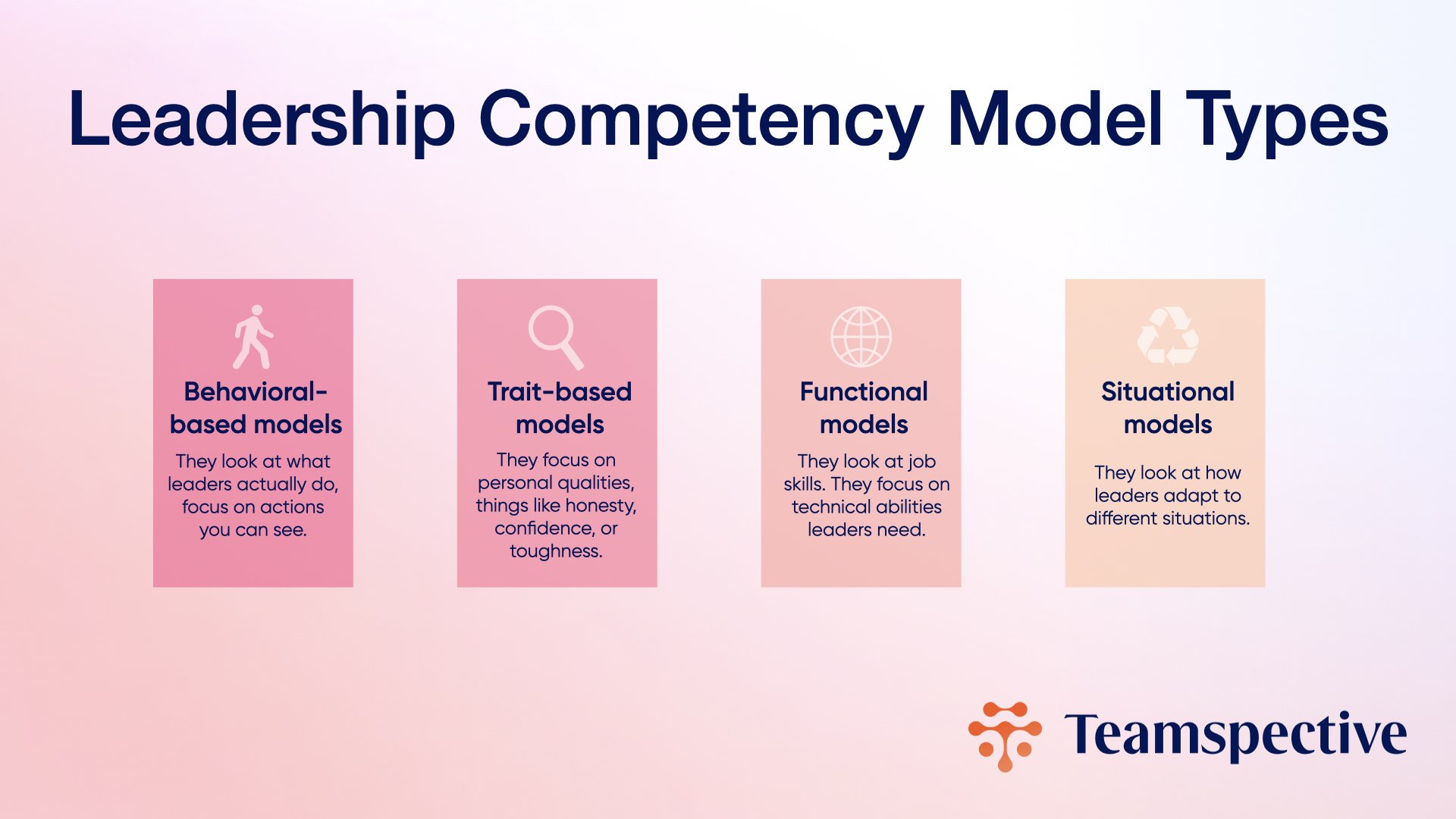
Targeted Development Activities
Not every leader needs the same training. Someone managing a high-performing team needs different support than someone dealing with underperformance issues.
Development activities might include:
- Coaching sessions
- Specific skill training
- Mentorship programs
- Practical resources and frameworks
Regular Feedback Loops
Leadership development requires continuous feedback.
When I scaled my team, the leaders who improved fastest were those who received frequent, specific feedback about their impact. Monthly check-ins work better than annual reviews.
Measurement and Adjustment
You need to know if your development plan is working. Track metrics like team engagement, retention rates, and performance outcomes. If the plan isn’t delivering results, adjust it.
5 Steps to Build a Successful Leadership Development Plan
Building a leadership development plan that actually works requires more than good intentions. Here’s the process I’ve refined over years of working with our clients on scaling teams:
Step 1: Define Your Leadership Principles
Start by documenting what leadership means in your organization. This isn’t about generic values like “integrity” or “innovation.”
Get specific. What role should leaders play in your teams? Should they run the show or provide tools and let their teams execute?
These principles will guide your hiring decisions and inform all your development efforts. Share them with current leaders and especially with new ones during onboarding.
Step 2: Identify the Needs
Ask yourself: What does the company need from its leaders that they can’t deliver right now?
Maybe your leaders excel at individual coaching but struggle with cross-team collaboration. Or perhaps they’re great strategists but avoid difficult performance conversations.
Use data to identify gaps:
- Team engagement scores
- Performance metrics
- Feedback from direct reports
- Collaboration patterns
This step requires honesty. The loudest problems aren’t always the most important ones to solve.
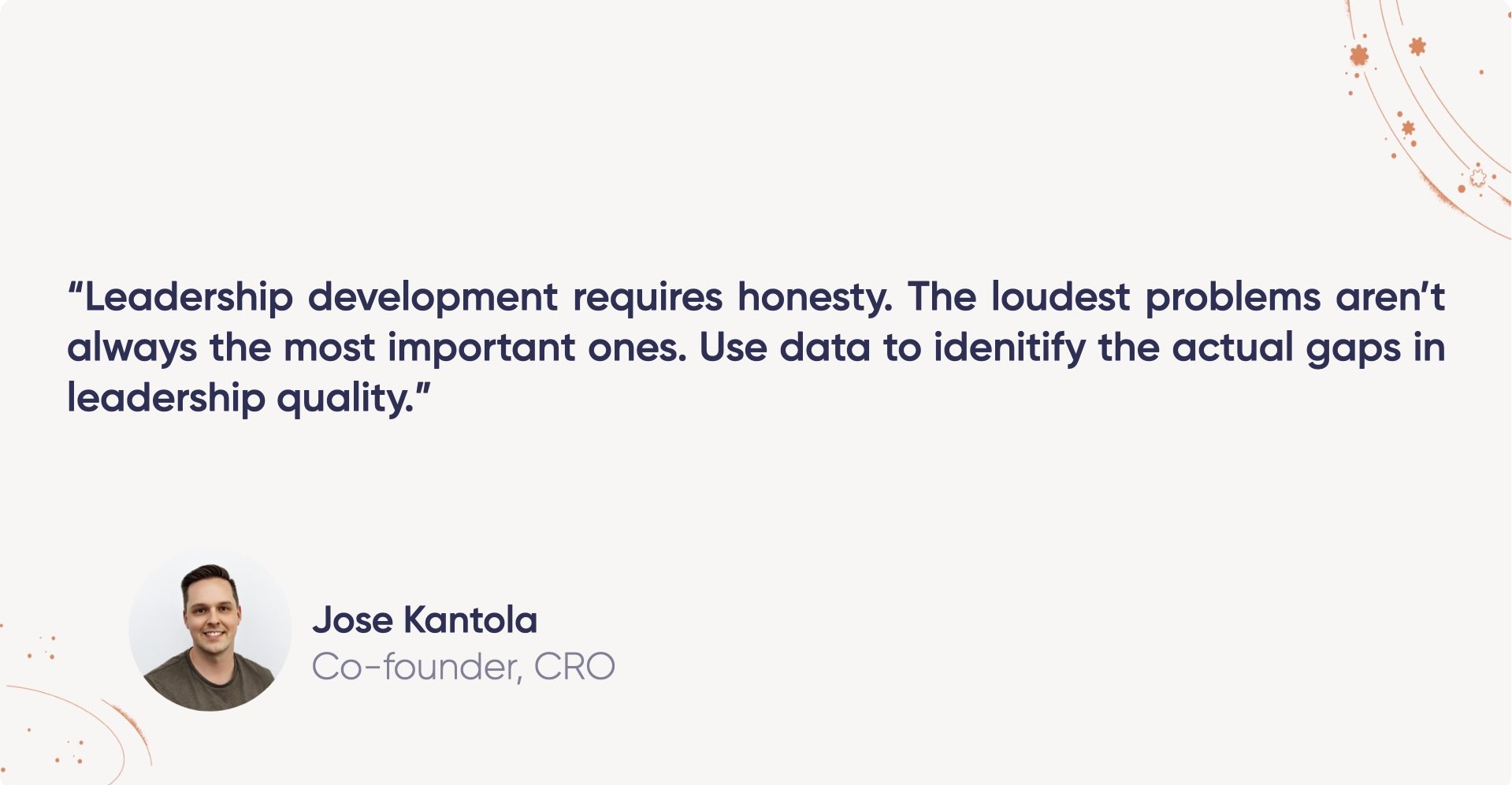
Step 3: Determine Your Approach
Decide whether you need ongoing programs or targeted initiatives.
Some development needs are constant. Training on your leadership principles should happen for every new manager, every time.
But other needs are situational. This year you might need to focus on performance management. Next year it might be change management or remote team leadership.
Adopt a mindset of evaluation. Ask yourself regularly: Do we need this program? Is it still relevant? Is it delivering impact?
Step 4: Choose Your Resources and Methods
Match your development methods to the actual needs you identified.
If ten leaders are in similar situations, a group training might work well. But if you only have three leaders facing a specific challenge, individual coaching or even a specific software tool might deliver better results.
Consider these options:
- Leadership enablement software for real-time guidance
- One-on-one coaching for personalized challenges
- Cohort-based programs for common skill gaps
- Mentorship pairings for long-term development
- Workshops for specific skill building
The key is relevance. A training session is worthless if the content doesn’t address what the leader is dealing with right now.
Step 5: Measure, Learn, and Adjust
Set clear success metrics before you launch any development initiative.
Track both leading indicators (engagement scores, feedback quality) and outcomes (retention rates, team performance, collaboration effectiveness).
After each program or initiative, gather feedback. Ask participants:
- Was this relevant to your current challenges?
- Did you learn something actionable?
- Will you use this in the next two months?
If the answers are consistently “no,” stop running the program. Redirect those resources to something that will actually help your leaders.
The best leadership development plans evolve. What worked when your company had 50 people might not work at 500 people. Stay flexible.
The Most Common Mistakes With Traditional Leadership Development Programs
I’ve learned the hard way that even the most expensive and well-designed leadership development programs can deliver minimal impact. Here are the mistakes I recommend everyone to look out for:
Continuing Programs Without Evaluating Their Impact
Once a program is established, it often becomes routine. Someone’s job becomes running it, and it continues year after year.
But here’s the problem: the challenge that prompted the program three years ago might be solved. Or the program might never have been effective in the first place.
Learn to stop and ask: If we stopped this program tomorrow, would anyone notice? Would our leadership quality decline?
If the answer is unclear, you need to evaluate whether the program is worth continuing.
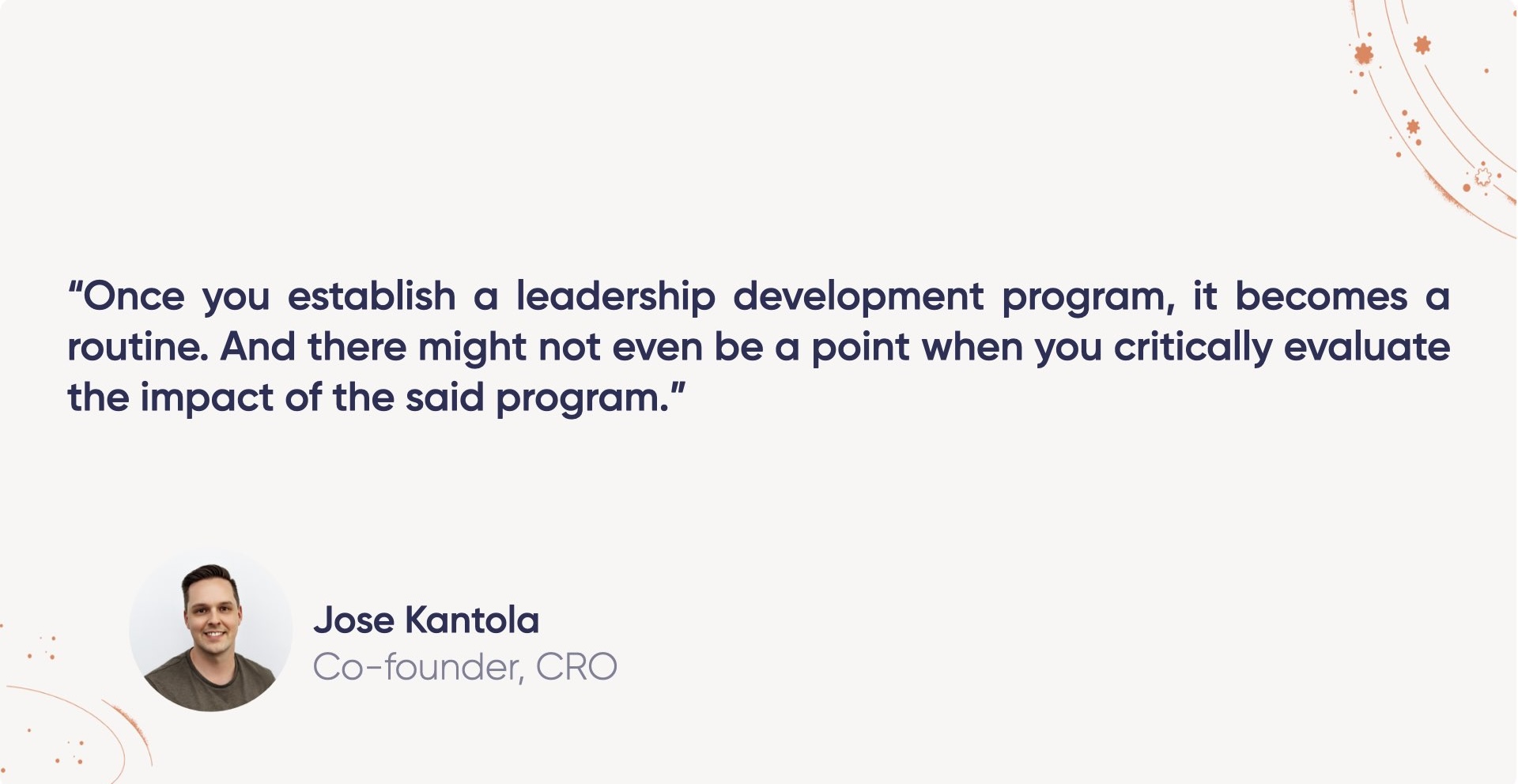
Using a One-Size-Fits-All Approach
Traditional programs typically group leaders by tenure or level. You’ve been a manager for two years? Here’s your cohort.
But this ignores reality. One leader might be managing a disengaged team that needs urgent attention. Another might have a high-performing team but struggle with cross-departmental collaboration.
Putting both through the same program wastes time and resources. The content will be irrelevant for at least one of them, possibly both.
Failing to Enable Real-Time Decision Making
Annual performance reviews and biannual engagement surveys don’t help leaders make better decisions in the moment.
When a leader is struggling with a performance issue in March, training materials from January don’t help. When team dynamics shift in October, waiting until December for survey results is too late.
Leaders need insights and support when issues arise, not months later.
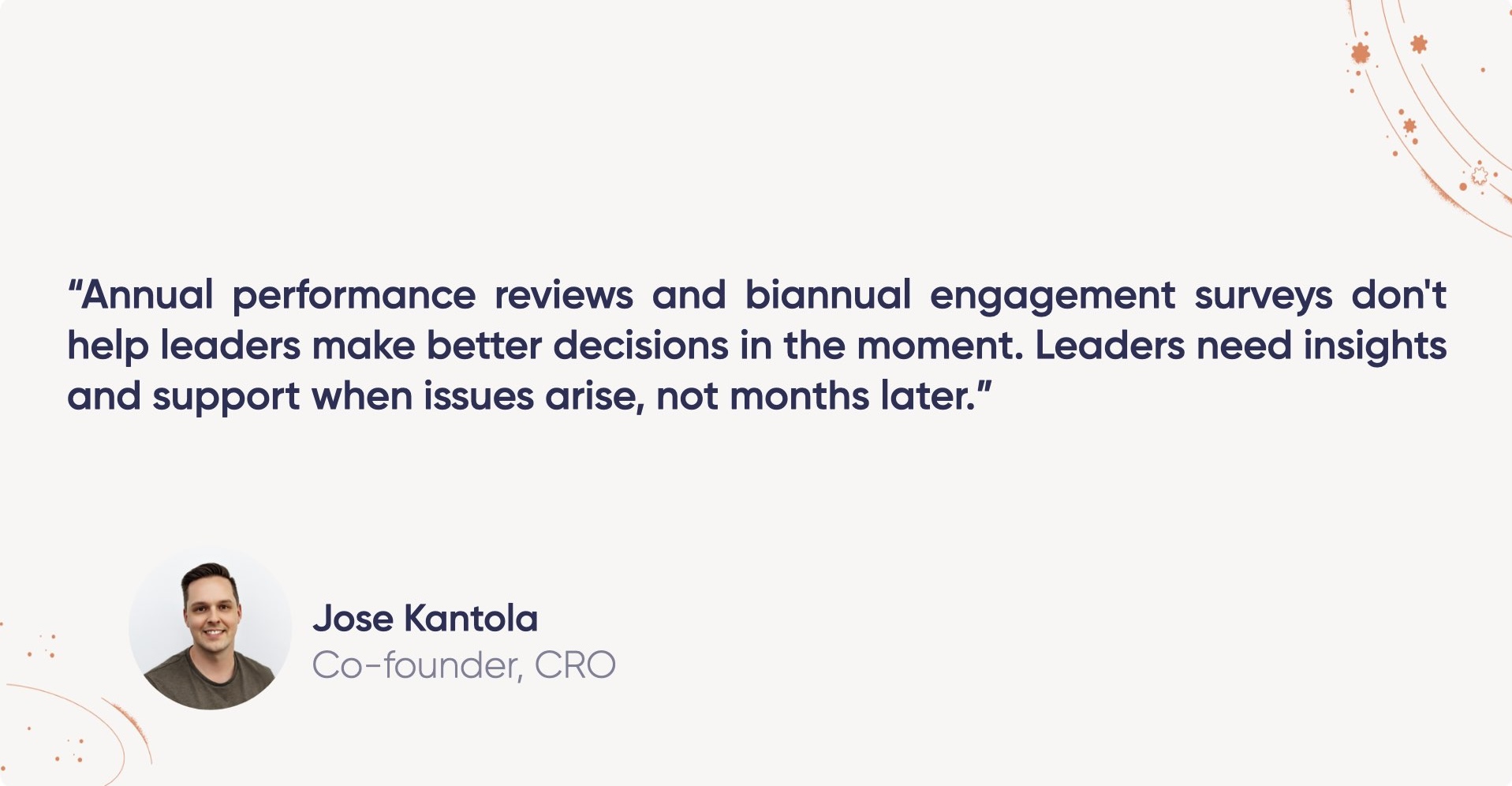
Not Making Leaders Data-Driven
I’ve seen leaders dismiss feedback because it conflicted with their perceptions. “That’s not how I see it” becomes a barrier to improvement.
The best development plans teach leaders to accept data that challenges their assumptions. When survey results reveal something unexpected, the response should be curiosity, not defensiveness.
Data should inform decisions about team priorities, individual development, and collaboration approaches.
How Technology Can Help in Leadership Development
Technology has changed how we approach leadership development. Here’s what I’ve found effective:
Real-Time Insights
Leadership enablement platforms can analyze multiple data sources: engagement surveys, performance metrics, and collaboration patterns, and identify what each leader should focus on right now.
Instead of waiting months for annual reviews, leaders get timely insights about their teams. This allows them to address issues before they become crises.
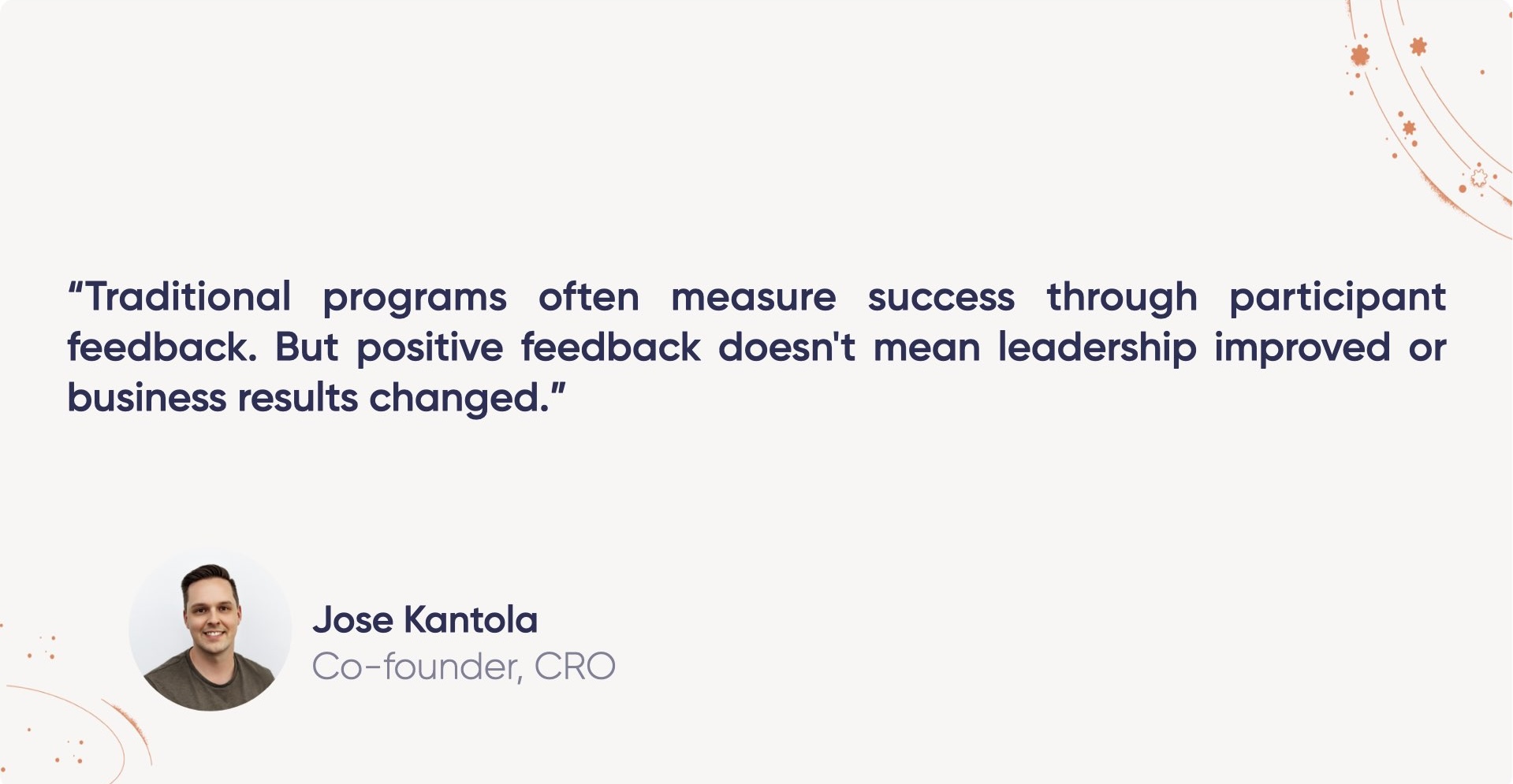
Personalized Recommendations
When you have digital data about a leader’s experience, team size, performance ratings, and engagement results, you can accurately identify the most impactful improvements they could make.
These recommendations align with your company’s leadership principles, so the guidance is tailored to your organization and the leader’s specific situation.
Automated Prioritization
With tools like Teamspective, the platform automatically analyzes team results, identifies trends, and highlights high-priority items.
It might flag that part of a team is highly engaged while another segment is struggling. Or it might reveal that confusion about priorities has increased sharply in the past two weeks.
Then it provides actionable guidance: discussion questions for one-on-one meetings, agenda items for team discussions, or coaching points aligned with company values.
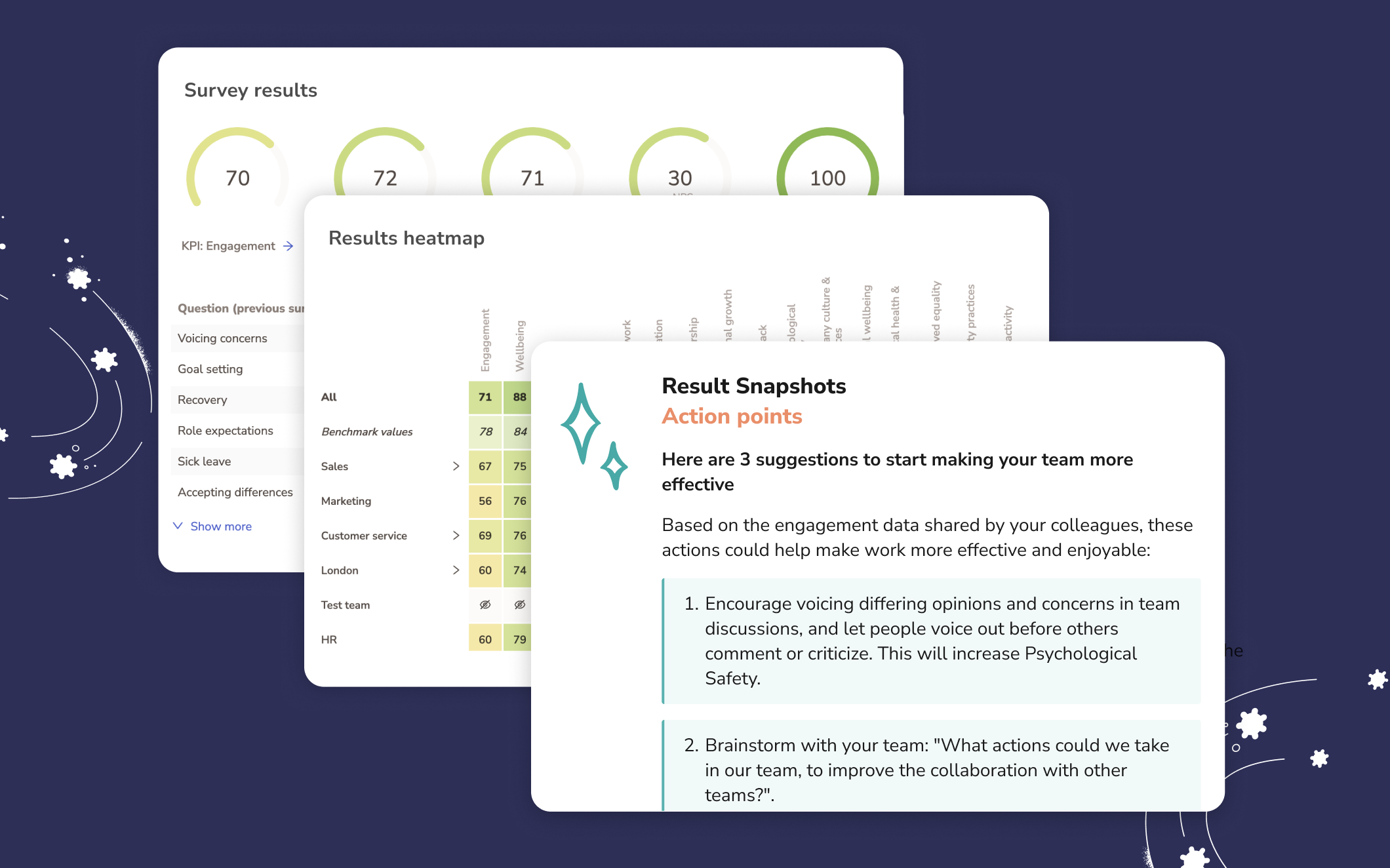
Reduced Administrative Burden
Traditional surveys require scheduling, reminding, following up, and compiling results. By the time leaders get insights, the moment has passed.
Platforms that integrate with communication tools like Slack or Microsoft Teams make data collection seamless. A survey becomes just another message that takes 30 seconds to answer.
Response rates increase dramatically (often by 50% to 80%) because the friction disappears.
Continuous Learning
Instead of annual training programs, technology enables continuous development. Leaders receive relevant coaching and resources exactly when they need them.
This approach respects that leadership challenges are situational and evolving.
Conclusion
After experiencing the growth of a company from 5 to 600 people across several countries, I’ve learned that leadership development is foundational for thriving teams.
A good leadership development plan provides structure without rigidity. It’s based on clear principles but adapts to individual needs. It measures impact and adjusts based on results.
Most importantly, it shifts from pushing leaders through standardized programs to enabling them to access the support they need, when they need it.
Ready to see the impact a leadership enablement platform can have on your company? Book a demo with our team of experts and get personalized guidance on your leadership development needs.



